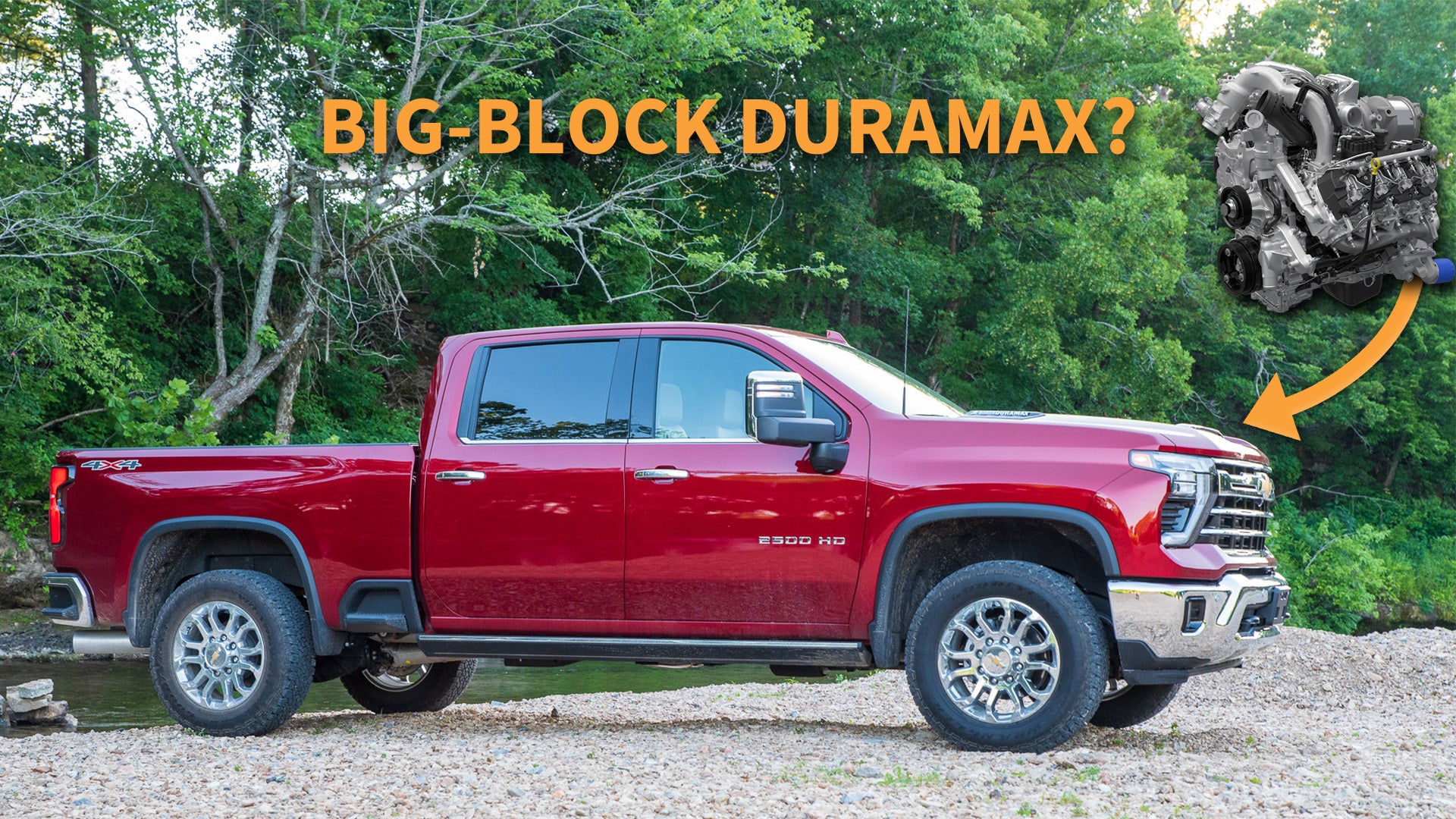Rumored ‘Big-Block’ Duramax Diesel Could Be 8.3L and We’re Off the Rails Now::You’d expect diesel engines to get smaller as time goes on, but recent reports claim GM’s truck power plant could grow by more than a liter.
8.3L is what it takes to haul that fat American ass.
Normally I’d say people who buy these cars are not near EV infrastructure, but I know thats not the case in the US.
Because I don’t have enough oversized idiots blasting their headlights in my eyes. Cool.
Feels like the death throes of the internal combustion engine, the supernova before they die out in common usage.
Or not.
Definitely not. Passenger cars will go EV relatively quickly, but you’re not going to see ICE go away in your lifetime.
Heavy duty trucks, aircraft, ships, etc all use petroleum combustion. That’s not going away any time soon. And as long as that’s still around they’ll still be making diesel.
You’ll end up seeing EV half ton and quarter ton pickups, potentially EV replacing the gas option in 2500+ trucks, but they’re going to have a diesel option for decades.
You’re right, I should have specified “consumer ICE.”
It’ll become rarer, but will never go away. As long as diesel is being made, heavier duty trucks will have a diesel option.
Even if it becomes a solely biodiesel option. You’re just not going to beat the efficiency, energy density, and quick refueling of an internal combustion engine until you can have a battery 1/15 the mass for the same energy, and can charge the thing in under half an hour, and doesn’t cost more than the vehicle itself when it’s time to replace it.
ICE engines, and diesels in particular can run for millions of miles. The record for a semi mileage is just over 3 million miles on the engine. You’re not going to find a battery pack that can go anywhere remotely close to that long. Especially in a heavy use vehicle like a truck that will be constantly going through charge cycles.
Just looking at the Tesla semi, the 500 mile range battery is 900kWh. A 100kWh model S battery costs $15,000 to replace, with $13,500 of that being the battery itself. Scaled up, the semi battery would be in the $90-100k range to replace.
The average semi runs around 100,000 miles per year. If you can get 1,000 full charge cycles out of the battery, you’d be replacing one every 5 years to the tune of nearly $100k each time. Not to mention replacing the electric motors themselves at several grand pop, and those don’t tend to last as long as the battery. Especially in a truck hauling 82,000lbs.
I agree. The energy density is simply too good to best with anything on the horizon.
Aircraft and long haul trucking, especially.
Why are we celebrating this?
If you read the article, you would see that larger diesel engines have lower emissions due to reduced compression ratios.
So big vehicles are good now. Can’t wait for cigarettes to get good again.
An engine increasing in size by 1 liter does not make the vehicle itself larger. These vehicles exist, that is not changing. Manufacturers are working to make these engines more efficient.
If you read the article, you would see thatif you believe the entirely baseless claim in that article, …
There you go.
If you don’t understand mechanical engineering and take your own knowledge of engines as being better than the calculations of literal engineers…
Damn I could’ve sworn I’ve studied that for 6 years and am an actual mechanical engineer! To be fair I’m not working in automotive anymore but I have trained as an automotive mechatronic before majoring ME.
I’m also wondering what calculations I’m supposed to doubt here, it’s literally a rumoured engine, no specs other than a displacement that could(!) be 8.3L, no emission data, to performance data. I’m just calling out that author’s claim that they made it bigger so it has less emissions. It’s obvious marketing bullshit he’s parroting. They were forced to, among other things, reduce compression due to emission laws and the resulting engine is inevitably less efficient, so they (could!) made it bigger to negate the efficiency losses and still be able to have a new model with more horsepower than the last one, despite having a less efficient ICE, obviously at the cost of fuel economy and all other emissions but nitrogen oxides. Not that it matters to their customers but that’s what it is, and only a marketing department could come up and twist this into something positive they have thought of to tackle emissions. And stop it with this engineers’ calculations bs, this shit isn’t even technical. NOx formation is far more complicated than just being a function of compression, it’s affected by how hot a mixture burns, determined by how gradual and geometrically even the combustion takes place and how much volume of the chamber is utilised or whether it concentrated to a specific region. Cylinder head geometry and injector design and actuation play just as big a role as compression (which really is a beneficial side effect to modern injector design that lead to a more efficient combustion.) They could’ve just reverted all that lean-burn technology (obviously not lean-burn for a Diesel but it’s the same philosophy) and sold the car with slightly less NOx emissions, but that’s not what this is about. It’s about marketing not being happy about an engine with less horsepower, so they let them build it with more displacement and made up a story of how they made it bigger so it could emit less NOx. They know dense people will buy that.
Are we celebrating this? Looks more like just reporting on it to me…
They’ll never get smaller because emissions laws would affect them more.
Holy shit I thought the 6.6 in my 2500 was huge, but imagine how much the block would weigh on an 8.3L. I mean at some point your front suspension gets absolutely crazy. Would be smart if they could make it a straight six though instead of a V8, way better balance characteristics and that’s why many of the big diesels have that layout.
Packaging, that’s a big V8 already to fit under the hood. Tracktor trailers have big big long hoods
I know they’ve gotten more compact, but the 8.3L in our L8000 with it’s transmission probably weighs as much as my F350.
Nice to see the burgerland folks adopting metric units like liter







